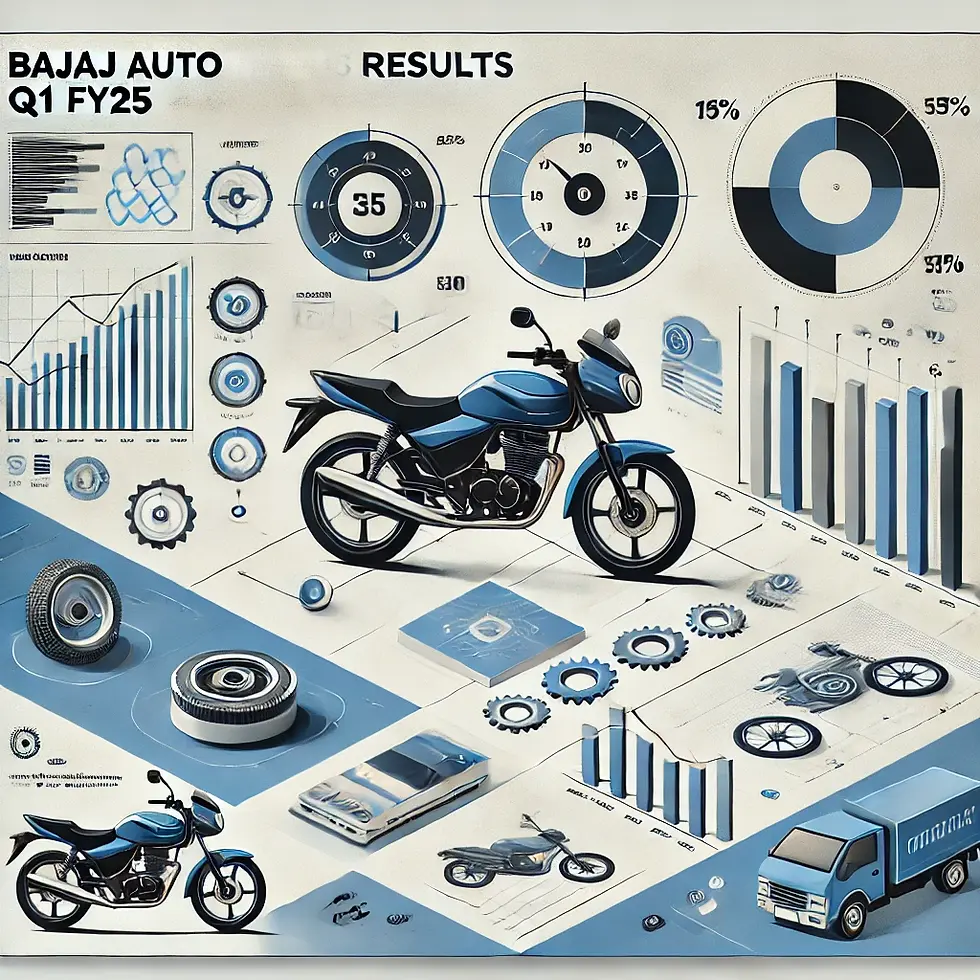How do economic fluctuations specifically impact Bajaj Auto's sales dynamics!
- nvshah0610
- Jul 28
- 2 min read
Economic fluctuations impact Bajaj Auto's sales dynamics through multiple direct and indirect channels, influencing both domestic and export markets as well as operational costs.
1. Domestic Market Demand Sensitivity:Economic conditions such as inflation, income levels, and rural versus urban economic health significantly affect consumer purchasing power for Bajaj Auto's products, especially two-wheelers that are partly discretionary purchases. Inflationary pressures, particularly on rentals and living costs in larger cities, have dampened affordability and sales demand in urban and smaller deep rural markets, while mid-tier towns and northern states have shown more resilience. Economic slowdowns or uncertainty tend to reduce demand in entry-level segments (e.g., 100cc motorcycles), whereas higher displacement motorcycles (125cc and above) have seen more robust growth.
2. Export Market Exposure and Currency Volatility:Bajaj Auto derives about one-third of its sales from exports to over 100 countries. Economic fluctuations in key export markets—many of which are in emerging economies such as Nigeria, Egypt, Mexico, and other African and Latin American countries—pose risks to sales volumes and earnings. These risks come through reduced GDP growth worldwide, sharp currency fluctuations, especially against the Indian Rupee, and geopolitical uncertainties. For instance, Nigeria and Egypt face volatile local economies tied to oil revenues, affecting local consumer spending power. Bajaj manages this by diversifying its export markets to mitigate risks, although analysts remain cautious about export volume growth due to these uncertainties and high base effects169.
3. Commodity Price Inflation and Supply Chain Impact:Global economic fluctuations often lead to volatile commodity prices (e.g., steel, aluminum, rubber) that raise Bajaj Auto's raw material and production costs. These cost increases squeeze profit margins unless offset by pricing strategies. Regulatory changes such as new emission norms (OBD 2) add to input cost pressures. Bajaj has seen material cost impacts of around 100 basis points per quarter due to inflation and compliance costs.
4. Financing and Interest Rate Environment:Macro fluctuations influencing interest rates affect consumer financing availability and affordability. Bajaj Auto benefits from lower inflation and interest rates through easier vehicle financing, positively influencing demand. Conversely, rising rates and tightening financing can reduce sales, particularly in price-sensitive consumer segments.
5. Market Volatility and Consumer Confidence:Economic uncertainty impacts consumer confidence and purchase decisions, particularly in discretionary spending categories like vehicles. Bajaj’s sales dynamics respond to shifts in consumer perception influenced by GDP growth rates and broader economic recovery patterns. This effect is more pronounced in lower displacement and urban segments.
Summary:Economic fluctuations affect Bajaj Auto primarily by modifying consumer purchasing power and demand in both domestic and international markets, impacting raw material costs and profitability, influencing currency translation of foreign revenues, and altering financing conditions for buyers. Bajaj's strategy to mitigate these risks includes geographic diversification of exports, product portfolio adjustment (focus on premium and electric vehicles), cost control measures, and channel expansion into rural/less volatile markets. However, near-term sales dynamics remain sensitive to inflationary trends, currency volatility, and global economic growth uncertainties.
This comprehensive impact underscores Bajaj Auto’s exposure to and management of macroeconomic risks shaping its sales performance and financial outcomes.



Comments